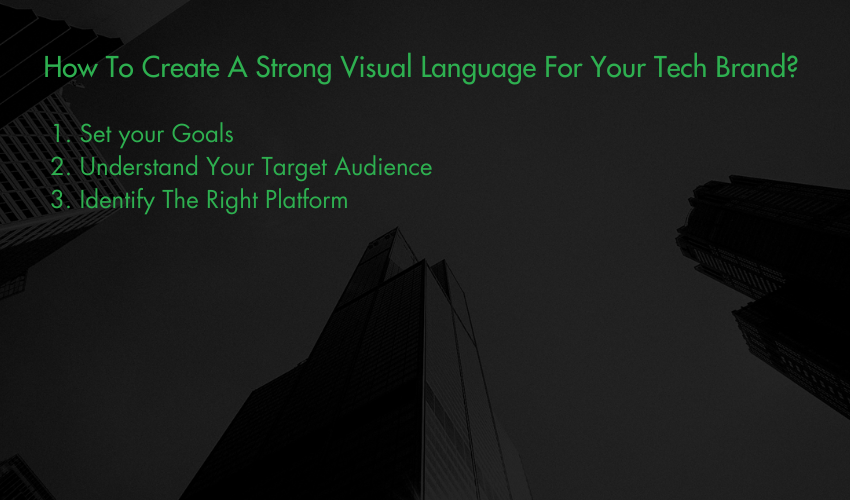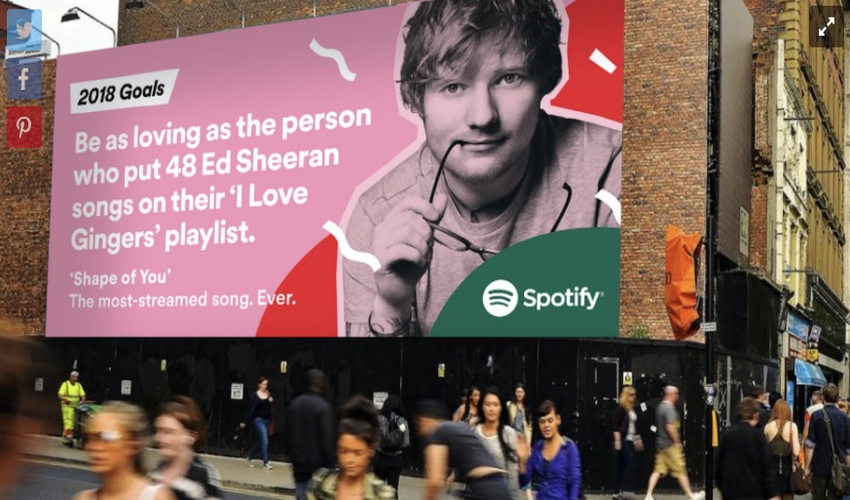Did you know that it takes only 6 days to start a business in the US? With tech startups mushrooming by the day, it’s essential to differentiate yourself from the rest through a strong brand presence which can be established through setting up a visual language for your tech brand.
Your brand guidelines often define the usage of your logo, color palette, font choices, but simply defining these facets is no longer enough. Today, tech brands investing in a visual language can go beyond simple brand standards.
By defining a specific illustration style, icon style, and data visualization style for all branded content including campaigns as part of your marketing strategy, you can clearly and categorically plan a strong visual language for your tech brand.
Find Tech Brand Names On A .tech Domain!
What Is Visual Language?
A visual language is a set of brand guidelines specific to a marketing or branding campaign that does not replace your brand identity but enhances it as per your campaign goal and target audience.
A well-defined visual language ensures that all visual content for your tech brand has uniformity keeping in mind the goals of your campaign. Visual language helps to optimize your content in a way that connects with your target audience and helps them identify as well as distinguish your brand.
Why Do You Need A Visual Language?
There are three major reasons why your tech brand requires a visual language:
1. Consistency
Marketers in tech startups use different styles and types of visual content to accomplish their campaign goals, which often makes it difficult for the audience to distinguish one tech brand from another.
If your tech brand produces visual content with consistency across mediums and platforms through a common visual language, it becomes an easy identifier for your brand and helps audiences connect all the pieces of your content and understand your message easier and faster.
2. Easy Targeting
As a startup, you may have established a set of guidelines that you have been following to the T across all segments of customers – a visual language can help distinguish campaigns aimed at different categories of audiences based on demographics.
As an example, Spotify’s OOH campaign mined search and playlist data of its user base to develop thematic, branded ad experiences on billboards imprinting forward-looking, hopeful tones into ordinary experiences like walking to work or waiting for the bus.
3. Quality Control
Humans are more likely to remember content with videos and images, so it becomes very important to generate good quality visual content for your tech brand. Establishing a distinct visual language for your campaigns also ensures that your visual styles do not clash thus maintaining quality control.
How To Create A Strong Visual Language For Your Tech Brand?

1. Set your Goals
Some market research about the industry, benchmarking with your competitors and analysis of existing customer behavior data should help you define clear goals for your marketing campaign.
While this is the first step towards establishing a visual language for your tech startup, a critical sub-step is to not lose sight of those goals throughout your campaign.
There could be one or multiple goals for your visual campaign, however, every individual piece of content should have only one goal – in other words for one visual campaign goal you should design and follow one visual language.
This is important because in trying to achieve conflicting goals with the same visual language, you are at risk of not optimizing for any of those goals.
2. Understand Your Target Audience
Setting your target audience may or may not be a pre-cursor to your goal-setting exercise, but it is crucial. For certain campaigns, your audience may differ from the audience you have identified for your overall marketing plans.
This is why you need to identify your target audience based on a certain campaign and design your visual language around it.
For instance, you may have created multiple products that are suitable to various industries across sectors or various needs of the customers. Now, you are about to venture into a new domain and launch a new product which is specialized in FinTech.
Find Tech Brand Names On A .tech Domain!
While designing a visual language for the launch of this new product, you don’t need to target audiences that are interested in your product specializing in medical health.
However, before you target your visual language around your campaign, it is important to understand how your target audience consumes information and reacts to it.
You need to understand what drives more engagement among your audiences and on what platforms before you zero down on one visual language. The look, feel and tone of your campaign may differ a lot from what you have created in the past.
This is especially true if the age-bracket to which your audience belongs differs from what your target audience in the past has belonged to.
3. Identify The Right Platform
The same set of audiences react differently on different platforms – this is because of vast differences between how a platform pushes its content, and the generic tone followed by users.
For example, audiences on Twitter do not react as well to long-form content about your product or links to instructional or informational videos but respond favorably to memes, gifs, witty responses to customers/ competing brands – short, impactful, humorous messaging.
Contrary to this, audiences on Facebook might have more patience for longer text content and videos up to a minute or more. Audiences on Instagram respond majorly to high-quality images and videos as they do not have much patience for text so putting up snippets of videos about your product might work here.
The audience profiling on each of these platforms also differs. So, on the basis of your target audience, it is important to understand which age-group or demographics of the audience responds to your content.
It is also important to bring about slight differences in the way you are creating content for each of these platforms.
Final Thoughts
A visual language ensures consistency, quality control, and easy targeting of messaging throughout your marketing campaign.
Additionally, it saves time, efforts and resources by ensuring that you plan your campaign at one go rather than waste your time coming up with new visuals for each asset.
In creating a visual language for your tech brand, invest time in some market research and set specific goals for your campaigns, identify the right set of the target audience for your campaign, and target them through the right platform using the most suitable medium of communication.
Small efforts put in at the start are sure to lead you into achieving your goals at an easier and faster rate.
As a guiding step, you can establish a mood board that showcases various characteristics that you want for your visual language which defines the color palette, typography, and illustration style.
You can take an example from some of the leading tech brands acing the social media game and how they successfully selected platforms through consistent visual language to target their audiences.
Tech brands that invest their time in creating a strategic visual language lay the foundation for success. This vastly improves their chances of achieving their goals.
So make sure you are making smarter choices and by creating an appealing visual language for your tech brand.


